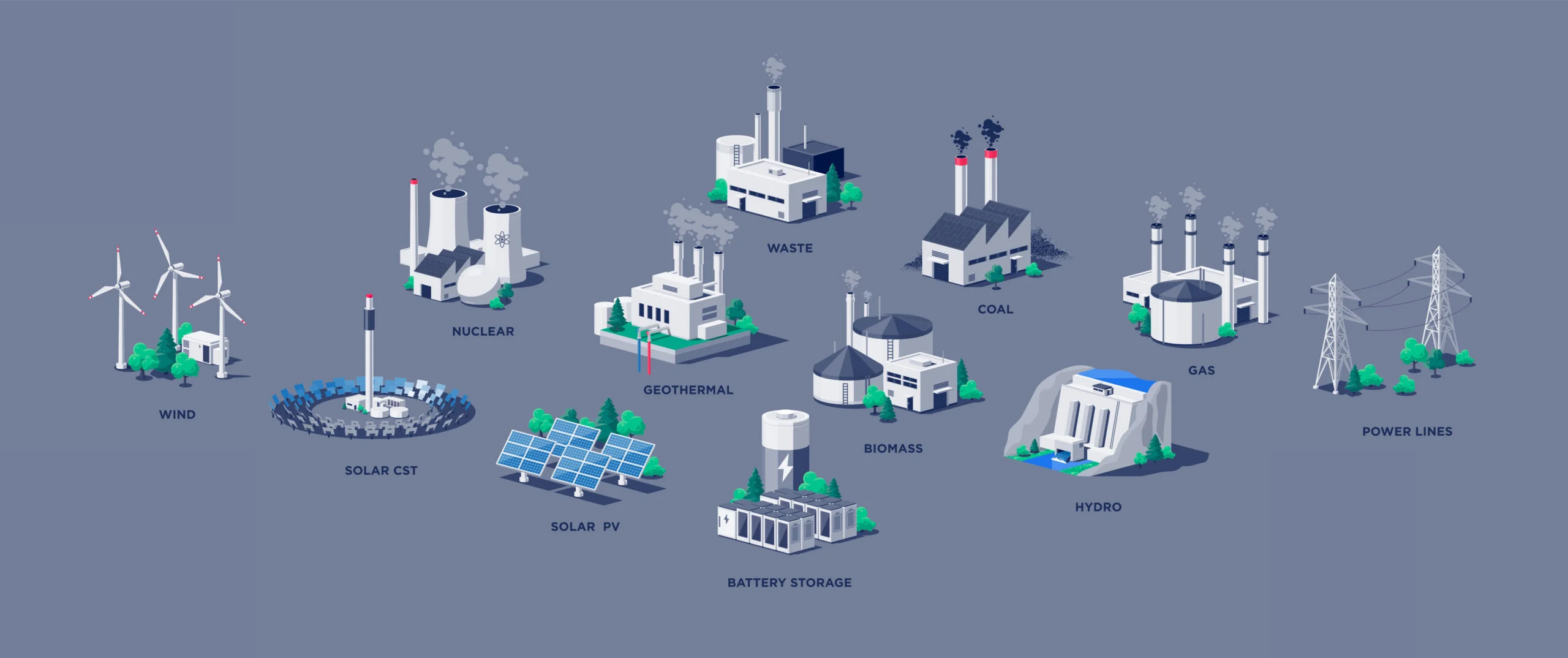In 2007, the Bush administration enacted the Energy Independence and Security Act to help increase the production of renewable energy sources, promote research into energy storage and greenhouse gas capture projects, help increase energy efficiency for consumers in products, buildings, and vehicles, and decrease reliance on foreign energy. While some complementary measures like the Inflation Reduction Act are under debate, energy demand has spiked rapidly, driven by increased developments of resource-hungry AI and data centers, supply chain challenges, and erratic and volatile weather. Fortunately, demand flexibility initiatives support an enriched, diverse energy portfolio necessary to increase energy security and grid reliability, while defraying high peak energy costs.
For the 4th of July this year, we’re celebrating energy efficiency and the tools that can help U.S. utilities achieve energy independence. Here, we’re defining energy independence as not requiring outside help to produce the energy necessary to power our nation. From virtual power plants to demand response and EV charging, demand flexibility opens up opportunities for utilities to decrease costs while leveraging the distributed energy resources (DERs) already available in many communities.
Wanted: Energy Independence
Meeting national energy independence is no small task. To do this, utilities require numerous energy options; over-reliance on any one fuel source can lead to serious challenges. Energy crises are a historical certainty, exemplified by the COVID-19 pandemic shortages from just a few years ago to the 1973 oil crisis and beyond. The 1973 oil crisis was so challenging, in fact, that the U.S. government formed the Department of Energy with the express aim of addressing future energy crises. Likewise, the energy crisis prompted then-President Gerald Ford to ask U.S. citizens to “help save scarce fuel in the energy crisis, drive less, (and) heat less,” an early example of community energy efficiency programs.
It’s worth noting that U.S. energy policy has long favored conservation efforts that directly parallel demand flexibility programs like demand response or EV charging, programs that aggregate devices across a service territory for large-scale device control. In 2022, the U.S. produced 2.5% more energy than it consumed, the first time in approximately 70 years, driven in part by a shale boom, which afforded energy producers access to large amounts of domestic oil and gas. Still, banking on finding a large, untapped source of fossil fuels is, at best, unrealistic, especially as energy needs continue to rise.
Needed: Energy Right Now
Last week, the Federal Energy Regulatory Commission (FERC) called for more dispatchable resources to meet the rising energy demand driven by temperature extremes: heat waves always drive demand. According to FERC chairman Mark Christie, “We’re simply not building generation fast enough, and we’re not keeping generation that we need to keep. Some of our systems really came close to the edge.”
This increase in energy demand isn’t just an annual occurrence that reflects seasonal changes, but also electrification efforts, supply chain challenges, and more. These challenges are compounded by legislation that curbs IRA credits, as well as proposals to further tax renewables. Fortunately, demand flexibility programs leverage distributed energy resources (DERs) like solar, battery energy storage systems (BESS), electric vehicles and EVSE chargers, and smart home devices like thermostats and water heaters. In many cases, these resources already exist, whether that’s in utility-held assets like solar or battery installations, or the behind-the-meter DERs found in places like residential, commercial, and industrial properties.
The good news: DERs are already here and already available to leverage.
Navigating the (Very) Long Interconnection Queue
For grid-scale programs, utilities face an increasingly long grid interconnection queue for new projects. For perspective, that interconnection queue backlog grew by 30% in 2023, a trend that persists, although a recent Texas law looks to expedite deployments much quicker. These grid-scale projects utilize distributed energy resource management systems (DERMS) to leverage the utility-held assets that remain difficult to develop and connect. Conversely, a Grid-Edge DERMS platform leverages behind-the-meter DERs found in residential, commercial, and industrial properties. As it stands, the DER market is expected to nearly double by 2027, which includes both front-of-meter and behind-the-meter devices.
– Syd Bishop. Content Specialist, Virtual Peaker
While the threat of taxes on solar and wind installations can challenge the development of grid-scale projects, distributed energy resources like BESS, electric vehicles and EVSE chargers, and thermostats and water heaters remain valuable behind-the-meter assets useful in demand flexibility programs. Although behind-the-meter DERs pose an intermittency risk, through functionality like Topline Demand Control (TDC), which combines a Grid-Edge DERMS with AI, model predictive control, and forecasting software, grid operators can request a specific outcome that the system will then work to provide. Put differently, TDC renders behind-the-meter DER assets as predictable as a gas turbine.
Solutions to Help Achieve Energy Independence
There are a lot of challenges to energy independence, from the aforementioned supply chain and legislative issues, as well as an inordinately long grid interconnection queue. By and large, demand flexibility programs leverage existing resources to shift load to where and when it’s needed. Through the use of a DERMS, demand flexibility programs control DER assets for both conservation and generation initiatives. Let’s look at a few opportunities to achieve energy independence to better meet needs.
A Diverse Energy Portfolio & Generation Assets
It cannot be said enough how important it is to diversify your potential energy assets. While estimates may vary, the U.S. Energy Information Administration (EIA) reports that “the global supply of crude oil, other liquid hydrocarbons, and biofuels is expected to be adequate to meet the world’s demand for liquid fuels through 2050.” Though it’s fair to see these projections as subjective, the need for a diverse portfolio of energy options remains relevant, and that urgency will only continue to grow.
Although grid-scale projects can take time to develop, utilities can access DERs to meet rising energy demand, while in turn satisfying customers, and they can do that right now. Energy assets like solar or battery are useful assets in repowering the grid. Through devices like solar inverters, utilities can employ solar power generated on hot, sunny days to redistribute energy from solar installations to repower the grid during peak periods of usage, one example of a virtual power plant. Likewise, V2G charging functionality also provides a further opportunity to repower the grid through aggregate device control to meet energy needs during periods of peak demand.
Conservation Is King
As former President Ford noted, conservation remains a critical component of any energy shortage. Demand flexibility programs like demand response and EV charging speak directly to that tactic by shifting energy consumption to off-peak hours of usage. Through aggregate device control, demand flexibility programs can curtail or pause energy consumption during peak hours, when demand is highest. For example, demand response often leverages thermostats or water heaters to mitigate usage during times of high demand, to decrease overall usage across the grid. While this does not produce energy, it frees up existing energy resources to help spread them out. Doing so defrays high peak energy market costs while enhancing grid resiliency.
Conclusion: Demand Flexibility & Energy Independence
Achieving energy independence is a long process, but one started decades ago. This conversation is continued through demand flexibility initiatives, which alleviate grid strain, while providing opportunities for utilities a lucrative path to enhance grid resiliency. Through aggregate device control and functionality like TDC, utilities can leverage both front-of-meter and behind-the-meter DER assets to shift communally generated energy or conserve energy at the grid scale. There is no magic, single energy asset solution to energy independence, but through a robust and comprehensive demand flexibility strategy and commitment to a diverse energy portfolio, utilities can plan for a more energy-efficient tomorrow today.





